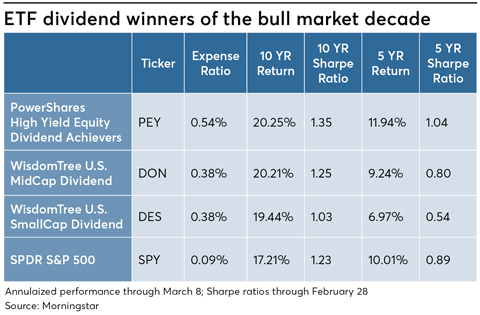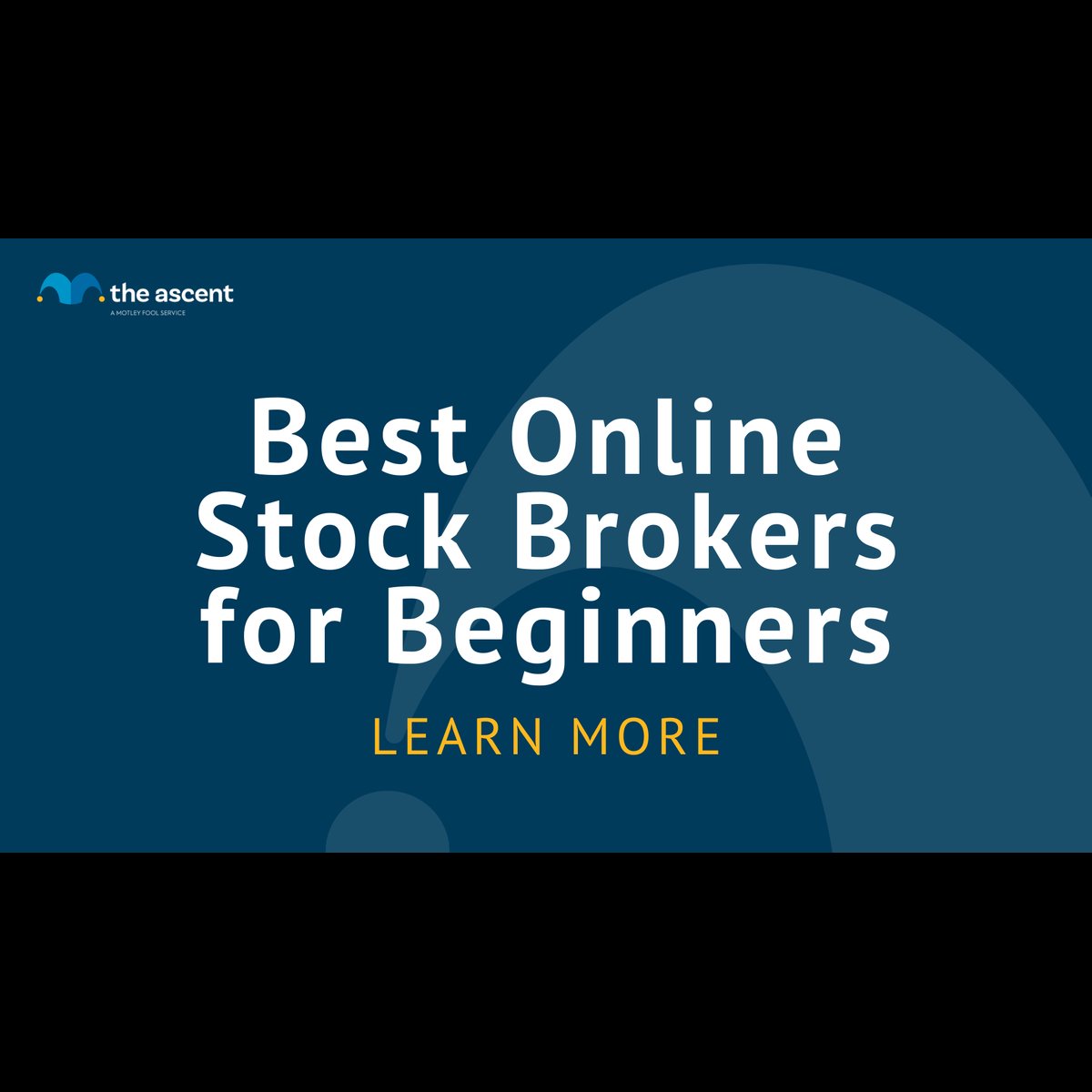
There are many great tech dividend stocks available. Below are the details on Texas Instruments. Seagate. Cisco. HP Inc.. and Cisco Systems. These are all excellent options. However, you need to be aware of a few things before investing. These companies are often highly valued, so it's important to thoroughly research them. Also, don't forget to keep your eyes open for growth and dividend opportunities.
Texas Instruments
Texas Instruments might be a good stock to consider if your search is for tech dividend stocks. TI has a long track record of returning cash its shareholders. Its recent announcement highlights 18 consecutive years of dividend increases. In addition to its solid fundamentals, TI's business strategy and outlook is a compelling reason to invest in TI stock. However, investors should note that these statements are speculative and there are risks and uncertainties associated with these types of statements.

Seagate
Seagate and other tech stocks might be worth a look if you're looking to buy low-yielding dividend stock. These companies have consistently increased their dividend payouts, and some have paid them for a decade or more. Western Digital doesn't pay dividends at all. Seagate and other tech dividend shares are worth looking into, even though there are risks.
HP Inc.
HP Inc. is an American multinational technology company with its headquarters in Palo Alto. The company makes personal computers, printers and other related products. The company produces a variety of products, including 3D printing. HP Inc.'s FAQ contains more information. This article is an overview of the company's products and services. Before we go, let's look at how HP Inc. is different than its competitors.
Cisco
While the market is generally stable, there are some companies that have demonstrated that they can still make profits through high-yielding dividend stocks. Cisco is one such company. This tech dividend stock has a strong track record of paying out a decent payout and looks good for the future. Although the stock's dividend is not as high as investors hoped, it's still an attractive option for conservative income investors.

SAP SE
SAP SE (NYSE-SAP) is one the most prominent companies in the software sector. The company's dividend payments have been increasing over the years. The company has an impressive track record of increasing shareholder value and is among the top dividend payers. What is it that makes SAP such a attractive dividend stock to invest in? Let's take a look at its history. The company was founded in 1972. There are over 140,000 shareholders. Its market capitalization is currently $7.3 billion and its growth rate has been over 6% over the past 4 years.
FAQ
Can you trade on the stock-market?
Everyone. However, not everyone is equal in this world. Some have greater skills and knowledge than others. They should be rewarded for what they do.
However, there are other factors that can determine whether or not a person succeeds in trading stocks. For example, if you don't know how to read financial reports, you won't be able to make any decisions based on them.
These reports are not for you unless you know how to interpret them. You need to know what each number means. You must also be able to correctly interpret the numbers.
You will be able spot trends and patterns within the data. This will assist you in deciding when to buy or sell shares.
If you're lucky enough you might be able make a living doing this.
How does the stock exchange work?
By buying shares of stock, you're purchasing ownership rights in a part of the company. A shareholder has certain rights. He/she can vote on major policies and resolutions. He/she has the right to demand payment for any damages done by the company. He/she can also sue the firm for breach of contract.
A company cannot issue more shares than its total assets minus liabilities. This is called capital adequacy.
A company that has a high capital ratio is considered safe. Companies with low ratios are risky investments.
What are the benefits to investing through a mutual funds?
-
Low cost - Buying shares directly from a company can be expensive. It is cheaper to buy shares via a mutual fund.
-
Diversification is a feature of most mutual funds that includes a variety securities. When one type of security loses value, the others will rise.
-
Professional management - Professional managers ensure that the fund only invests in securities that are relevant to its objectives.
-
Liquidity – mutual funds provide instant access to cash. You can withdraw your money at any time.
-
Tax efficiency - mutual funds are tax efficient. This means that you don't have capital gains or losses to worry about until you sell shares.
-
No transaction costs - no commissions are charged for buying and selling shares.
-
Mutual funds are easy-to-use - they're simple to invest in. All you need is a bank account and some money.
-
Flexibility: You can easily change your holdings without incurring additional charges.
-
Access to information - You can view the fund's performance and see its current status.
-
Ask questions and get answers from fund managers about investment advice.
-
Security - You know exactly what type of security you have.
-
You have control - you can influence the fund's investment decisions.
-
Portfolio tracking – You can track the performance and evolution of your portfolio over time.
-
Easy withdrawal: You can easily withdraw funds.
There are some disadvantages to investing in mutual funds
-
Limited investment opportunities - mutual funds may not offer all investment opportunities.
-
High expense ratio - the expenses associated with owning a share of a mutual fund include brokerage charges, administrative fees, and operating expenses. These expenses will eat into your returns.
-
Lack of liquidity-Many mutual funds refuse to accept deposits. They can only be bought with cash. This limit the amount of money that you can invest.
-
Poor customer service - there is no single contact point for customers to complain about problems with a mutual fund. Instead, you will need to deal with the administrators, brokers, salespeople and fund managers.
-
Risky - if the fund becomes insolvent, you could lose everything.
What's the difference between a broker or a financial advisor?
Brokers specialize in helping people and businesses sell and buy stocks and other securities. They take care of all the paperwork involved in the transaction.
Financial advisors have a wealth of knowledge in the area of personal finances. They can help clients plan for retirement, prepare to handle emergencies, and set financial goals.
Financial advisors may be employed by banks, insurance companies, or other institutions. They could also work for an independent fee-only professional.
Consider taking courses in marketing, accounting, or finance to begin a career as a financial advisor. It is also important to understand the various types of investments that are available.
What is a Stock Exchange and How Does It Work?
Companies can sell shares on a stock exchange. This allows investors and others to buy shares in the company. The market sets the price of the share. It is usually based on how much people are willing to pay for the company.
Investors can also make money by investing in the stock exchange. Investors invest in companies to support their growth. This is done by purchasing shares in the company. Companies use their money for expansion and funding of their projects.
There are many kinds of shares that can be traded on a stock exchange. Some are called ordinary shares. These are most common types of shares. Ordinary shares can be traded on the open markets. The prices of shares are determined by demand and supply.
Preferred shares and bonds are two types of shares. Priority is given to preferred shares over other shares when dividends have been paid. If a company issues bonds, they must repay them.
Statistics
- For instance, an individual or entity that owns 100,000 shares of a company with one million outstanding shares would have a 10% ownership stake. (investopedia.com)
- The S&P 500 has grown about 10.5% per year since its establishment in the 1920s. (investopedia.com)
- Ratchet down that 10% if you don't yet have a healthy emergency fund and 10% to 15% of your income funneled into a retirement savings account. (nerdwallet.com)
- Even if you find talent for trading stocks, allocating more than 10% of your portfolio to an individual stock can expose your savings to too much volatility. (nerdwallet.com)
External Links
How To
How to open an account for trading
It is important to open a brokerage accounts. There are many brokerage firms out there that offer different services. Some brokers charge fees while some do not. Etrade, TD Ameritrade Fidelity Schwab Scottrade Interactive Brokers are some of the most popular brokerages.
Once your account has been opened, you will need to choose which type of account to open. One of these options should be chosen:
-
Individual Retirement Accounts (IRAs).
-
Roth Individual Retirement Accounts
-
401(k)s
-
403(b)s
-
SIMPLE IRAs
-
SEP IRAs
-
SIMPLE 401(k).
Each option offers different advantages. IRA accounts are more complicated than other options, but have more tax benefits. Roth IRAs permit investors to deduct contributions out of their taxable income. However these funds cannot be used for withdrawals. SIMPLE IRAs are similar to SEP IRAs except that they can be funded with matching funds from employers. SIMPLE IRAs are very simple and easy to set up. These IRAs allow employees to make pre-tax contributions and employers can match them.
Finally, you need to determine how much money you want to invest. This is called your initial deposit. Many brokers will offer a variety of deposits depending on what you want to return. Depending on the rate of return you desire, you might be offered $5,000 to $10,000. This range includes a conservative approach and a risky one.
You must decide what type of account to open. Next, you must decide how much money you wish to invest. Each broker has minimum amounts that you must invest. The minimum amounts you must invest vary among brokers. Make sure to check with each broker.
After choosing the type account that suits your needs and the amount you are willing to invest, you can choose a broker. Before selecting a brokerage, you need to consider the following.
-
Fees: Make sure your fees are clear and fair. Many brokers will try to hide fees by offering free trades or rebates. However, some brokers raise their fees after you place your first order. Be wary of any broker who tries to trick you into paying extra fees.
-
Customer service: Look out for customer service representatives with knowledge about the product and who can answer questions quickly.
-
Security - Make sure you choose a broker that offers security features such multi-signature technology, two-factor authentication, and other.
-
Mobile apps - Check if the broker offers mobile apps that let you access your portfolio anywhere via your smartphone.
-
Social media presence - Find out if the broker has an active social media presence. If they don’t have one, it could be time to move.
-
Technology - Does the broker use cutting-edge technology? Is the trading platform intuitive? Are there any problems with the trading platform?
After choosing a broker you will need to sign up for an Account. Some brokers offer free trials while others require you to pay a fee. Once you sign up, confirm your email address, telephone number, and password. Next, you will be asked for personal information like your name, birth date, and social security number. Finally, you will need to prove that you are who you say they are.
Once you're verified, you'll begin receiving emails from your new brokerage firm. You should carefully read the emails as they contain important information regarding your account. You'll find information about which assets you can purchase and sell, as well as the types of transactions and fees. Be sure to keep track any special promotions that your broker sends. These may include contests or referral bonuses.
Next is opening an online account. An online account can usually be opened through a third party website such as TradeStation, Interactive Brokers, or any other similar site. Both websites are great resources for beginners. You will need to enter your full name, address and phone number in order to open an account. Once you have submitted all the information, you will be issued an activation key. You can use this code to log on to your account, and complete the process.
Once you have opened a new account, you are ready to start investing.